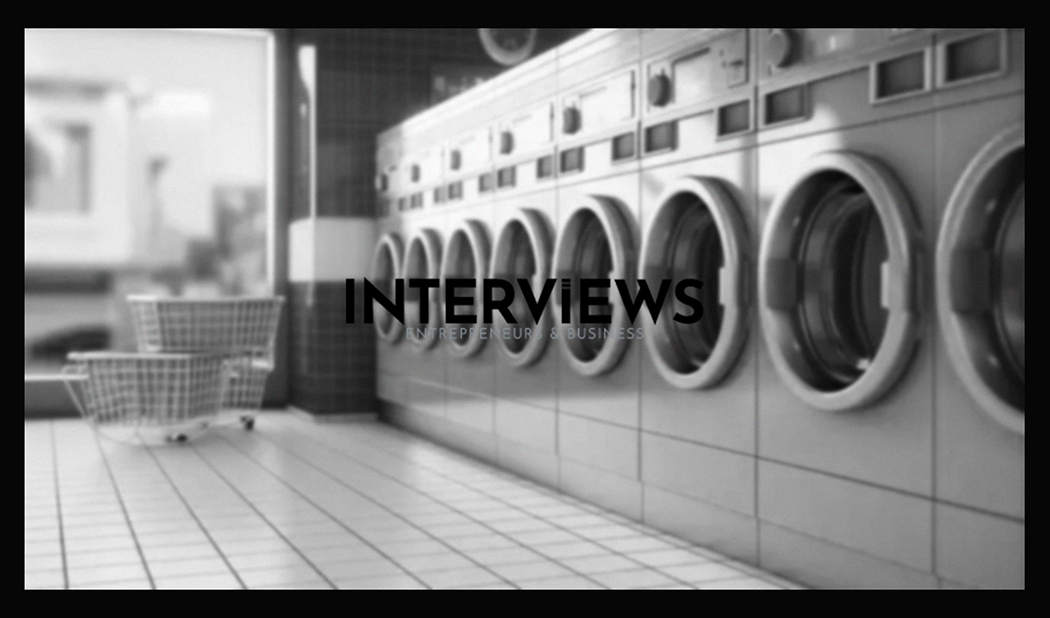Is Diving into the Laundromat Biz a Wash or a Spin Cycle of Success? Let’s Sort it Out.
Ever thought about turning quarters into more quarters? Laundromats. They aren’t the sexiest venture. Still, the hum of dryers holds an overlooked opportunity. Is owning a laundromat profitable? Let’s sort through the pros and cons.
The Sudsy Side: Profitability and Cash Flow
Let’s discuss numbers. At the end of the day, that’s what counts. Laundromats are seen as cash-generating machines. There’s a solid reason for this.
- Success Rate That’s Cleaner Than Your Whites: Forget nail salons or trendy juice bars. Laundromats have a 95% success rate in five years. That’s rare in small business. U.S. laundromats aren’t just surviving; they thrive.
- Cash Flow That Keeps Rolling In: Imagine a business where customers pay in cash upfront. Laundromats generate significant cash flow. Expect $15,000 to $300,000 yearly. That can make you excited.
- Return on Investment (ROI) That’s a Real Rinse and Repeat: Searching for a solid investment? Laundromats typically provide a 20% to 30% ROI. It’s like finding cash repeatedly.
- Profit Margins That Are Nicely Starched: Profit margins can range between 20% and 35%. Not bad for a business focused on washing clothes. U.S. laundromats show that clean clothes lead to clean profits.
What’s the Monthly Take Home?
Monthly income is as varied as sock colors in a teen’s room. It depends on size, location, and management.
- Smaller Laundromats: Think about a small neighborhood spot. These generate roughly $1,500 to $5,000 profit monthly. Enough to pay bills and maybe take a short trip.
- Larger Laundromats in Prime Spots: Here, we discuss laundromat empires. Well-established places can make $10,000 to $30,000+ per month. Suddenly, life at a laundromat seems plush.
- Self-Service Champions: Self-service models are best for maximizing profit. Minimal staff, maximum cash flow.
- The Big Picture: Typically, laundromats pull in around $5,000 to $25,000+ each month. Your results may vary. The potential is definitely there.
Spinning the Wheel: Factors That Tumble Profitability Up or Down
Not all laundromats are equal. Several factors can impact your laundry business dreams.
- Location, Location, Location: This old saying holds true. High apartment density? Yes. Limited in-unit laundry? Yes. You want to be where customers overflow. A great location should be visible with easy access.
- Size and Equipment Matter: Go big or go home? Bigger laundromats with modern machines usually earn more. A starting point is around 2-3 washers and dryers per 100 square feet.
- Operational Efficiency: Run a tight operation. Maintenance, cleanliness, and superb customer service are your secret weapons. Efficiency means happy customers who return.
- Extra Suds: Additional Services: Think beyond basic wash and dry. Add wash-and-fold, deliveries, and even dry cleaning partnerships to boost earnings.
- Cost Control: Operation Overload: Utilities can take away your profits fast. Energy-efficient equipment helps save money. Monthly laundromat costs vary between $5,700 and $17,800.
- Competition: It’s a Wash-Out World: Are you in a laundromat desert or a crowded market? Too many competitors can hurt earnings. Research your local landscape.
- Demand: Are People Dirty (Clothes-Wise)? Market demand is key. Is your service needed? Laundromat users often include renters without laundry at home.
The Price of Cleanliness: Costs to Consider Before You Dive In
Starting a laundromat costs significant money. Be ready for major upfront and ongoing expenses.
- Initial Investment: Buckle Up: Expect a starting point of $100,000 to $300,000. It varies by location and equipment. Lease costs can range from $2,000 to $10,000 a month.
- Ongoing Costs: The Monthly Grind: Rent, utilities, insurance, and potential employee wages are daily expenses. Don’t neglect supplies like soap vending and change machines.
- Equipment Costs: Washers, Dryers, and Dollar Signs: Quality washers and dryers come at a cost. Invest properly to reduce headaches later.
- Lease Realities: Location, Rent-tality: Commercial leases can drain profits. Negotiate terms carefully before signing.
Tips to Keep Your Laundromat Spinning in the Right Direction
Want to increase your laundromat’s chances? Follow these tips.
- Market Research: Know Your Washers from Your Wastes: Research demand for laundromats in your area. Use data, not guesses.
- Strategic Location: Serious About Location: High foot traffic, visibility, and easy parking are crucial.
- Quality Equipment: Smart Spending Saves: Invest in reliable and energy-efficient machines. It lowers maintenance costs over time.
- Customer Service: Happy Folders, Happy Business: Ensure a clean and welcoming environment. Friendliness pays off.
- Additional Services: Upselling the Undies: Consider wash-and-fold and dry cleaning services. Multiple income streams help.
- Stay Current: Laundromat 2.0: Watch industry trends and tech updates. Smart machines and mobile payments pay off.
The Not-So-Fresh Smells: Downsides of the Laundromat Life
It’s not all fluffy towels and folding joy. Owning a laundromat has its share of tough realities.
- Big Bucks Upfront: Ouch, My Wallet: The initial investment is a hurdle. Property and renovations add up quickly.
- Maintenance Mayhem: Machines Break: Equipment endures wear and tear. Regular repairs are expected and costly.
- Competition Can Be Cutthroat: The market can be fierce. Attracting customers takes effort.
- Location Dependence: Stuck in a Spot: A poor location means trouble. Moving a laundromat is not easy.
- Utility Bills: Water and Electricity Costs: High utility bills drain profits fast. Efficiency helps, but costs add up.
- Security Concerns: Sadly Necessary: Theft is a risk. Security measures add expenses and management tasks.
- Seasonal Slumps: Slow Business Months: Demand can dip in certain seasons.
- Staffing Headaches: If You Hire: Finding reliable staff is a challenge beyond self-service.
- Tech Tango: Keeping Up with the Machines: Laundry tech changes often. Staying updated requires ongoing investment.
- High Risk, Potentially High Reward: Laundromats aren’t risk-free. Market shifts and breakages can affect profits.
Laundromat as an Investment: A Safe Bet?
Laundromats are seen as stable investments. They tend to be recession-resistant. People always need clean clothes, through thick and thin.
- Safety First: Steady Eddy Business: Laundromats are viewed as dependable ventures.
- ROI Appeal: Cha-Ching, Annually:The ROI is attractive.
- Annual returns of 25-30% attract investors. Laundromats offer steady profits and are appealing for those seeking consistent returns.
Passive Income? More Like Semi-Passive…
Sipping margaritas on a beach while your laundromat earns money? Not exactly. With smart management, you get close.
- Not Fully Hands-Off: Some Elbow Grease Required: Laundromats need your involvement. Maintenance, cleaning, and addressing customer issues are part of the deal.
- Ongoing Maintenance: Machines Need Love (and Wrenches): Regular maintenance is necessary. Cleaning and safety remain responsibilities for you or your manager.
- Management Matters: Steering the Ship: Even self-service laundromats require management. Finances and marketing fall on your shoulders, along with any staff supervision.
- Passive-ish Income Potential: Minimize the Mayhem: With good planning, laundromats can yield steady income with few hours spent weekly. You might manage a laundromat with just three to six hours of work weekly, if all goes well.
- Still Gotta Watch Out: Risks Remain: Watch for challenges like theft, vandalism, and high utility bills. These can affect profitability even in a semi-passive setup.
Permits? Yeah, You Need Those.
Before counting quarters, deal with red tape. You’ll need permits for legal operation.
- Fire safety permit – dryers and lint mix dangerously.
- Wastewater permit – dispose of soapy water responsibly.
- Health permit – cleanliness is crucial in business.
- Sign permit – inform customers where to find you and their clean clothes.
Taxing Matters: The Good News on Sales Tax
A positive tax update: As of 2024, 42 states exempt self-service laundry from sales tax. Only Hawaii, West Virginia, and New Mexico still tax self-service laundry. A nice boost for your bottom line.
SBA Loans: Uncle Sam Can Help with the Spin Cycle
Need financing help? The SBA may assist. SBA 504 loans have specifics for laundromats and dry cleaners. Check it out if you seek funding.
The Verdict: Is a Laundromat a Good Business?
The million-dollar question: Is a laundromat a good business? The answer is… it depends.
Laundromats provide high success rates, strong cash flow, and decent ROI. They’re relatively recession-resistant. With smart management, they yield semi-passive income.
However, significant upfront investment and ongoing costs exist. You must consider factors like location and competition. They’re not completely hands-off and present challenges.
If you are willing to research, invest wisely, and manage well, a laundromat can be a good business. It may lack glamour but remains reliably profitable. Keep your wits and your machines clean.





